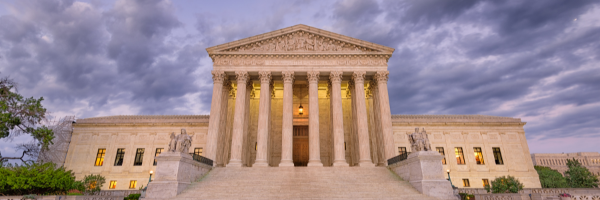Author: Brittony Maag
-
Monthly tracker: Article III federal judicial nominations by president by days in office since 2001

Through August 1, 2022, there were 890 authorized federal judicial posts and 77 vacancies. Seventy-five of those were for Article III judgeships. This report is limited to Article III courts, where appointees are confirmed to lifetime terms. In the past month, five judges have been confirmed In the past month, 25 judges have been nominated*.…
-
Monthly tracker: Article III federal judicial nominations by president by days in office since 2001

Through July 1, 2022, there were 890 authorized federal judicial posts and 77 vacancies. Seventy-five of those were for Article III judgeships. This report is limited to Article III courts, where appointees are confirmed to lifetime terms. In the past month, three judges have been confirmed In the past month, nine judges have been nominated*.…
-
Biden appointed second-most federal judges through July 1 of a president’s second year

President Joe Biden (D) has appointed and the U.S. Senate has confirmed 69 Article III federal judges through July 1 of Biden’s second year in office. This is the second-most Article III judicial appointments through this point in all presidencies since 1981. President Bill Clinton (D) appointed the most judges by this point in his…
-
Ballotpedia releases federal judicial vacancy count for June 2022

In this month’s federal judicial vacancy count, Ballotpedia tracked nominations, confirmations, and vacancies in Article III courts during the month of June through July 1, 2022. Ballotpedia publishes the federal judicial vacancy count at the start of each month. Highlights Vacancies: There have been three new judicial vacancies since the May 2022 report. There are…
-
Supreme Court rules there is no constitutional right to abortion; overturns Roe v. Wade

The Supreme Court of the United States (SCOTUS) released its opinion in Dobbs v. Jackson Women’s Health Organization on June 24, in which it held there is no right to abortion under the U.S. Constitution. The court’s decision explicitly overturned its previous rulings in Roe v. Wade (1973) and Planned Parenthood of Southeastern Pa. v.…
-
Monthly tracker: Article III federal judicial nominations by president by days in office since 2001

Through May 1, 2022, there were 890 authorized federal judicial posts and 77 vacancies. Seventy-five of those were for Article III judgeships. This report is limited to Article III courts, where appointees are confirmed to lifetime terms. In the past month, two judges have been confirmed In the past month, 10 judges have been nominated*…
-
Ballotpedia releases federal judicial vacancy count for April 2022

In this month’s federal judicial vacancy count, Ballotpedia tracked nominations, confirmations, and vacancies in Article III courts during the month of April through May 1, 2022. Ballotpedia publishes the federal judicial vacancy count at the start of each month. HIGHLIGHTS Vacancies: There have been four new judicial vacancies since the March 2022 report. There are…
-
Biden has appointed most federal judges through May 1 of a president’s second year

President Joe Biden (D) has appointed and the U.S. Senate has confirmed 60 Article III federal judges through May 1 of Biden’s second year in office. This is the most Article III judicial appointments through this point in all presidencies since 1981. The Senate had confirmed 33 of President Donald Trump’s (R) appointees at this…
-
Biden nominates five to Article III courts on April 27

President Joe Biden (D) announced his intent to nominate five individuals to Article III judgeships with lifetime terms on April 27: Sarah A.L. Merriam, to the U.S. Court of Appeals for the 2nd Circuit Lara Montecalvo, to the U.S. Court of Appeals for the 1st Circuit Elizabeth Hanes, to the U.S. District Court for the…
-
SCOTUS accepts two new cases for its 2022-2023 term

The Supreme Court of the United States (SCOTUS) accepted two cases for argument during its October 2022-2023 term on April 25. To date, the court has agreed to hear arguments in 11 cases next term. Reed v. Goertz concerns a split between the U.S. circuit courts on when the statute of limitations begins to run…

